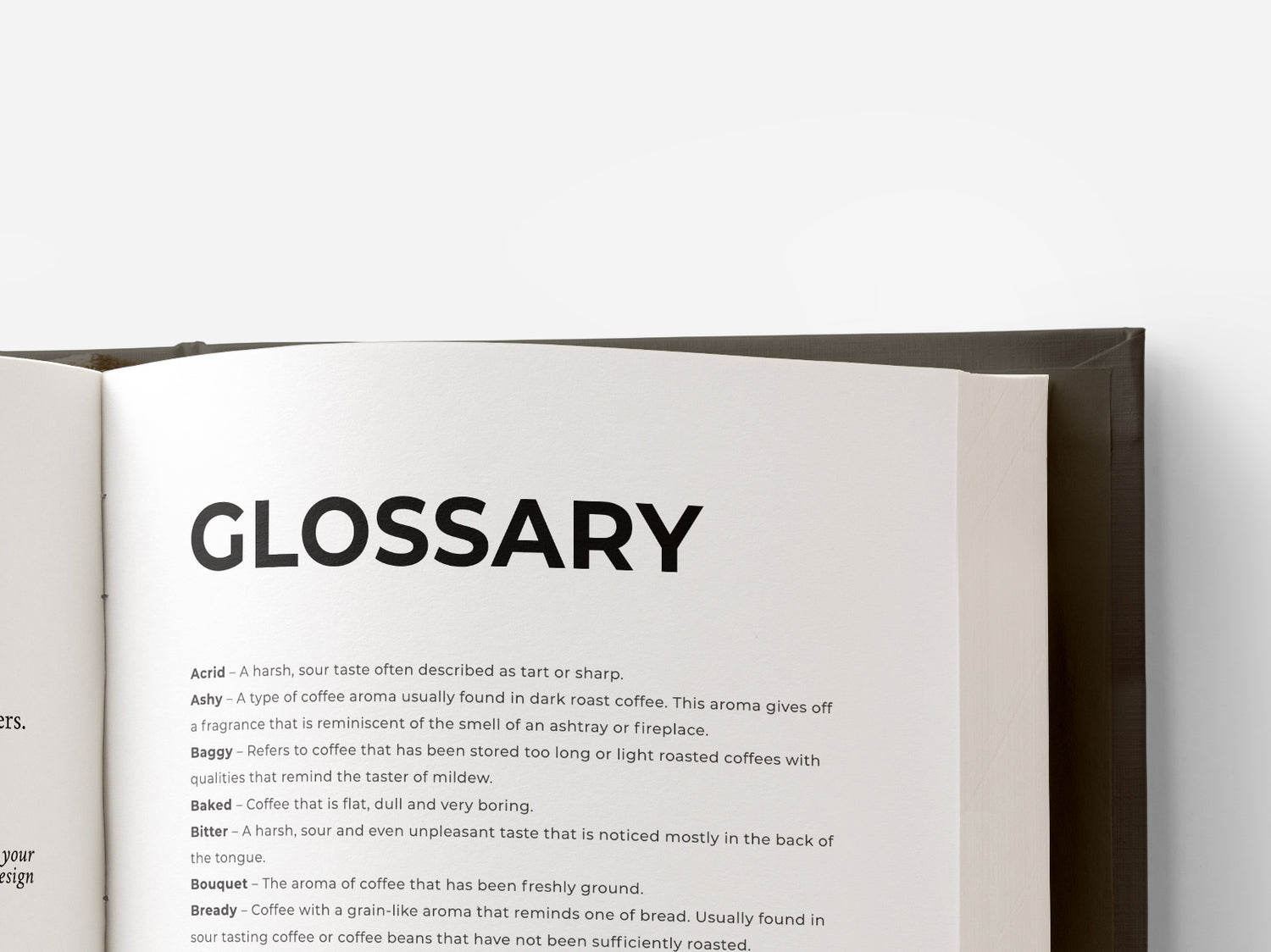This is not a complete glossary covering every term used when discussing coffee, and we have dicussed some of it on the flavour wheel. Let’s take a look at many of the most commonly used coffee tasting terms that will help you keep up with the conversation when it turns to coffee.
Acrid – A harsh, sour taste often described as tart or sharp.
Ashy – A type of coffee aroma usually found in dark roast coffee. This aroma gives off a fragrance that is reminiscent of the smell of an ashtray or fireplace.
Baggy – Refers to coffee that has been stored too long or light roasted coffees with qualities that remind the taster of mildew.
Baked – Coffee that is flat, dull and very boring.
Bitter – A harsh, sour and even unpleasant taste that is noticed mostly in the back of the tongue.
Bouquet – The aroma of coffee that has been freshly ground.
Bready – Coffee with a grain-like aroma that reminds one of bread. Usually found in sour tasting coffee or coffee beans that have not been sufficiently roasted.
Bright – Refers to pleasant tasting coffee with a tangy flavor.
Briny – A slightly salty taste in coffee that is caused by reheating or by coffee that has been left on a burner for too long.
Caramelly – A flavor or aroma that resembles candy or syrup such as sugars that have been caramelized.
Carbony – A flavor or aroma that has the characteristics of burnt food or wood. These flavors usually accompany darker roasted coffees.
Chicory – An herb used to flavor coffee or even as a coffee substitute.
Chocolatey – A flavor or aroma that resembles chocolate.
Citrusy – A flavor or aroma of citrus fruit. This can often be found in coffee as coffee beans come from the cherries of coffee.
Earthy – An aroma of fresh earth or wet soil. Can be considered both good or bad but sometimes refers to the presence of different types of mold.
Pungent – A sour or oniony taste from coffee that has been allowed to sit and ferment for longer than is necessary.
Floral – An aroma of fresh flowers that can often be found in coffees with a fruity or herbal flavor or aroma.
Fruity – An aroma and taste that resembles different types of fruits.
Grassy – An aroma that reminds one of mown grass that is usually associated with beans that have been under roasted or damaged by water.
Herbal – Refers to an aroma of freshly mown grass and herbs and is found in coffee that has not been fully dried when it is processed.
Hidey – Refers to an aroma or taste that resembles leather. Often found in some east African coffees.
Malty – An aroma of malt or grain similar to the aromas of freshly baked bread.
Mellow – A balanced and mild coffee that doesn’t have any strong tastes or aromas.
Nutty – An aroma resembling fresh nuts. This term is only used when recalling fresh nuts and not bitter or spoiled nuts.
Oniony – A flavor that reminds one of onions. It is often found when stagnate water is used for processing using the wet method.
Papery – A taste that results from storing coffee in paper bags or prepared using a low quality filter paper.
Quakery – A flavor that reminds one of peanuts resulting from using unripe coffee beans.
Rubbery – An aroma or characteristic found in fresh Robustas that refers to the taste and smell of hot tires or rubber bands.
Scorched – Coffee that has been roasted until it receives burn marks due to roasting too hot or poor tumbling during the process.
Sour – A biting and unpleasant flavor found in coffee.
Spicy – A taste or aroma that resembles cloves, cinnamon or other spices.
Tobacco – The aroma and flavor of fresh tobacco. Not always negative and can be found in many coffees around the world.
Winey – A combination of taste, smell and feel in the mouth of coffee that resembles that of wine.
Woody – A taste and smell of old coffee.
Lets get practising! That way you can begin to formulate exactly how a coffee tastes to you while also understanding how many coffee experts refer to the different taste experiences offered by some of the world’s best coffee.
After awhile, you will find that you are better able to discern the differences between each cup of coffee that you drink pointing out different aspects of what makes that cup of coffee special from all the rest. With a little effort, you will find that you are better able to appreciate and enjoy each cup of coffee you drink and as your coffee palate continues to develop, you will soon rise to the level of many coffee professionals.



